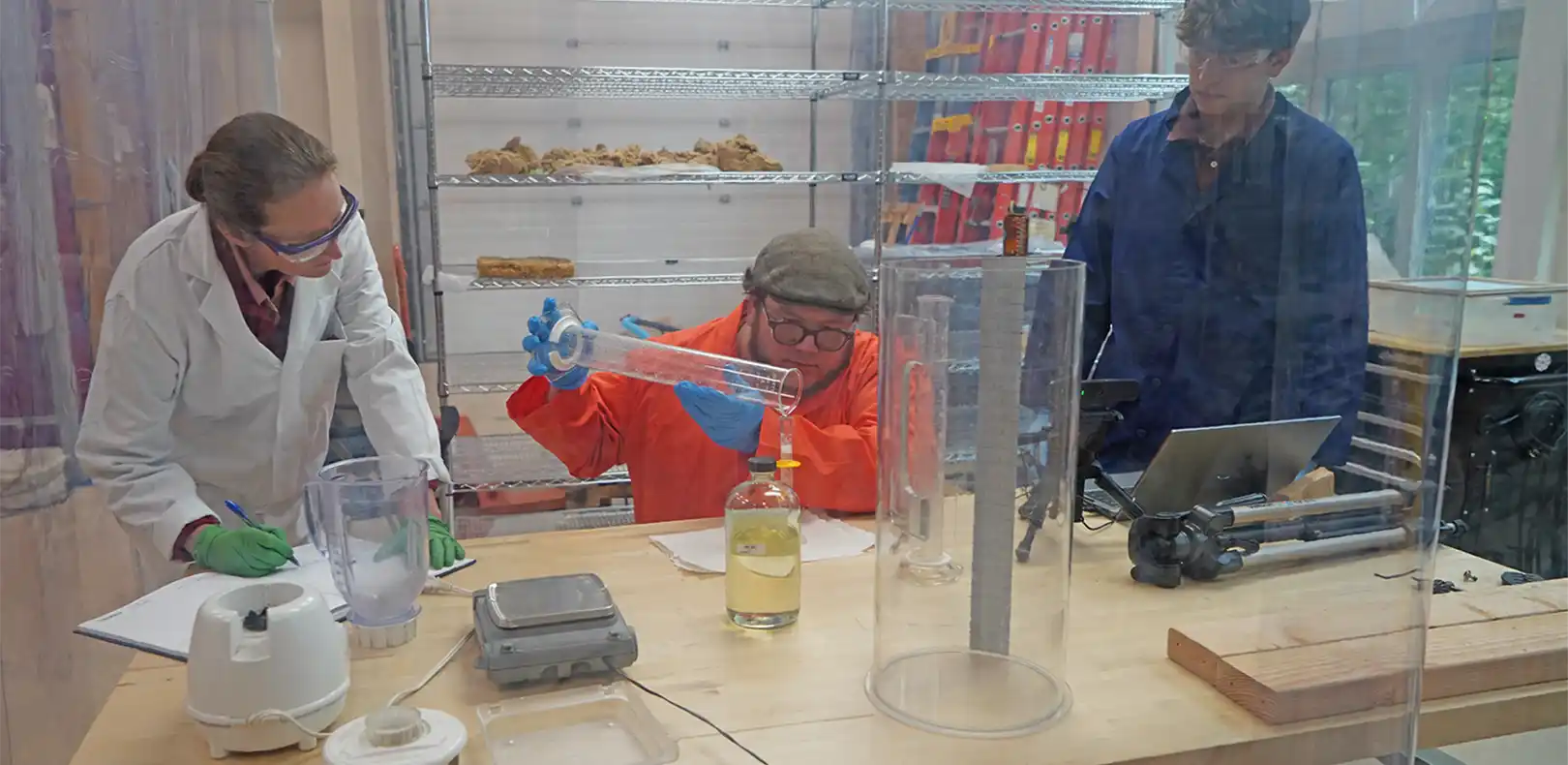Resilient Buildings
NLR researchers partner with industry and communities to create cost-effective, durable buildings that thrive in the local environment—whether it's the Arctic tundra, the Interior forest, or wet, windy coastal climates.
NLR engages with homeowners, businesses, and local governments to design building technologies that improve energy security, build workforces, and make housing more affordable for Americans.
Building Science Research and Analysis
NLR's Alaska Campus in Fairbanks is continually innovating to come up with the most high-performance, cost-effective building components using the latest materials and technologies. For projects in remote and rural communities, building assemblies also need to be simple, durable, and easy to ship and construct without heavy equipment. Economic analysis ensures that technologies save money for users over time.

Researchers grow insulation from a mixture of pulped spruce trees and mycelium, the root network of fungi, and install it into test walls at NLR's outdoor lab.
Design
Designers take the lessons learned from building scientists and economists to develop durable, affordable buildings. These demonstration homes aim to de-risk new technologies and market-ready innovations. They also incorporate workforce training and regional economic opportunities in building and manufacturing. Buildings are co-designed with stakeholders to ensure they reflect the environmental and practical needs of local communities. NLR's Alaska researchers have designed more than 20 demonstration homes across Alaska. Two examples are provided below.
Unalakleet

The Unalakleet demonstration home balanced cost and job creation by combining modular and site-built construction.
In Unalakleet, a village on the Bering Sea coast, researchers worked with the community to design a home that combined prefabricated technologies with site-built construction to maximize local job creation. Like many villages in the Arctic, housing in Unalakleet is expensive, overcrowded, and unhealthy. Residents pay three times more than the national average for heating. The high cost of construction has led to a major housing shortage, causing elders and young families to leave the community. The village needed a housing solution that would reduce energy burdens and preserve the community’s way of life.
In 2021, NLR worked with Unalakleet leaders to design a semimodular home. The most complicated and expensive portions—the kitchen and bathroom—were constructed in a shipping container in the Fairbanks lab. This container was shipped to Unalakleet, where the community built a home around it. The hybrid approach lowered costs by an estimated 40% while keeping roughly 75% of jobs in the community and was estimated to cut energy costs in half compared to typical housing in the area.
Mountain Village

Mountain Village "tiny homes" emphasize affordability and can expand over time.
NLR partnered with the Asa’carsarmiut Tribal Council to create affordable homes to ease overcrowding in Mountain Village, on the Lower Yukon River. NLR designed two buildings: a 480-ft2 structure with two bedrooms, and a 288-ft2 structure with an oversized foundation and deck that could be easily expanded, allowing the village to provide immediate shelter and for homes to grow over time. Both designs emphasized energy efficiency and local labor. Led by a local foreman, a village crew built five homes in 2022 and continues to build more—providing needed housing, reducing energy use, and creating jobs in the remote community.
Technical Assistance
NLR assists remote, coastal, and island communities in improving energy reliability and cost stability. Ranging from resource assessments, grid planning, building surveys, and retrofit support, NLR helps communities across Alaska and the U.S. improve energy efficiency and resilience of their building, grid, and transportation systems.
Contact
Share
Last Updated Dec. 6, 2025
